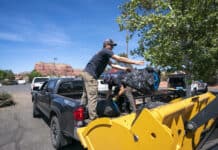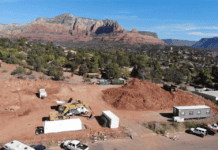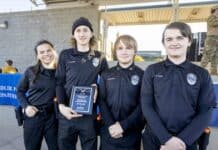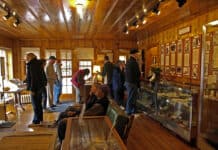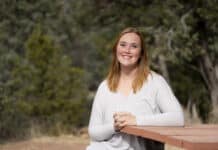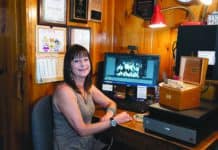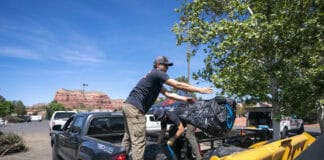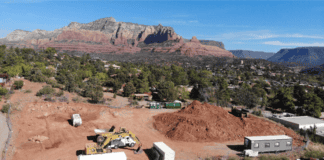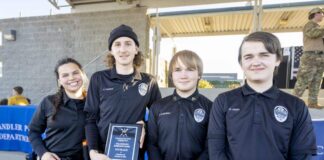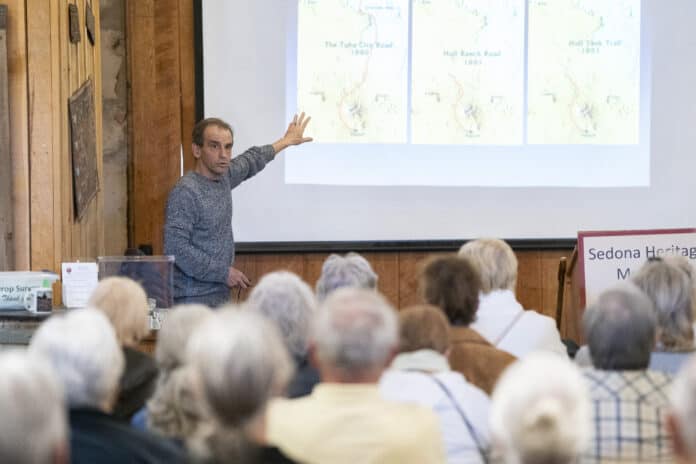
The Sedona Heritage Museum packed the apple shed again for its free speaker series on Thursday, Feb. 29, when Neil Weintraub, a retired archaeologist from the Kaibab National Forest, discussed two of his biggest passions: The history of the stagecoach route from Flagstaff to the Grand Canyon and long-distance running.
“While much has changed in Northern Arizona since 1901, the stunning landscape of the stagecoach route between Flagstaff and the Grand Canyon looks virtually the same as it first appeared to tourists in 1892,” the museum stated in a press release. “While the route was only in service for a decade, it played a significant role in attracting tourists to Northern Arizona and the Grand Canyon prior to 1901, when the Grand Canyon Railway reached the canyon’s rim. Today, this important piece of Northern Arizona’s history is kept alive every September when hundreds of runners and mountain bikers take a 100 mile journey paralleling the route on the Arizona Trail.”
Weintraub made his first trip to Sedona in the summer of 1985, when he arrived to pick up archaeological excavation equipment that was being stored by the Coconino National Forest.
“One of my first projects was right outside of Sedona, surveying roads and recording hundreds of archaeological sites,” Weintraub said. “But I had to drive down the switchbacks, which my stomach never liked, but that was my introduction to Sedona … in 1989. I spent a lot of the year camping out in Boynton Canyon with one of my professors and we surveyed Boynton Canyon, recorded almost 100 archeological sites there. Prior to that, what I refer to as the next stage of Sedona, which was … the Harmonic Convergence [in 1987], which really started seeing an influx of people into the community, and people that wanted to connect with the past and visit the thousands of archaeological sites that are all over Sedona.”
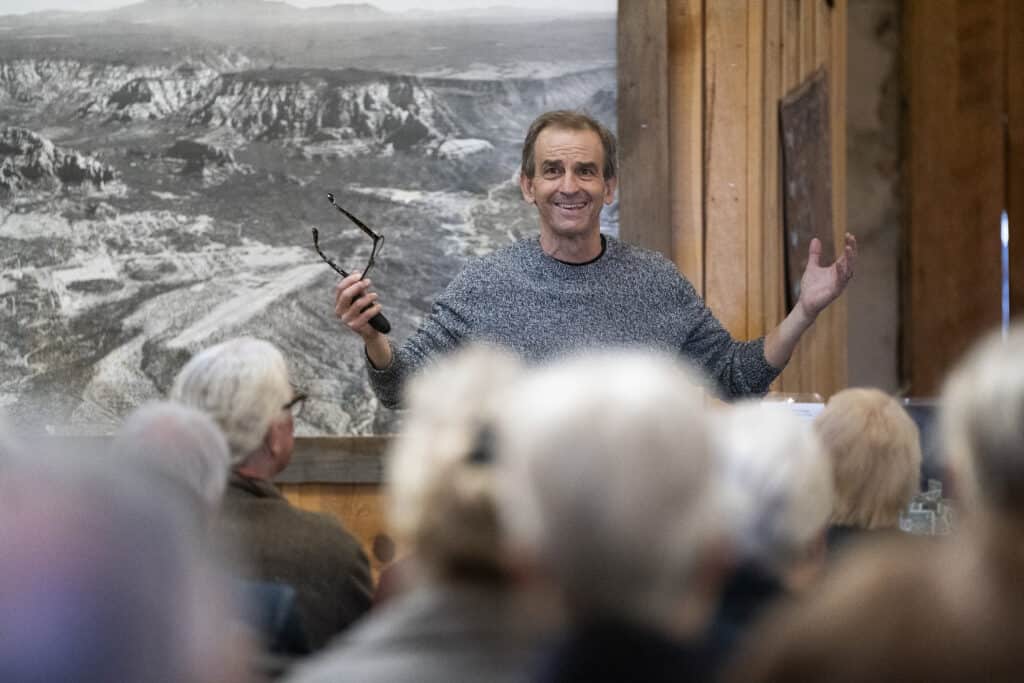
David Jolkovski/Larson Newspapers
Tourism as a major economic driver for Northern Arizona was one of the themes of Weintraub’s talk. In 1882, the Atlantic and Pacific Transcontinental Railroad extended to Flagstaff, and until the train arrived at Bright Angel along the South Rim of the Grand Canyon on Sept. 17, 1901, stagecoach lines were the fastest way to see the canyon.
The stagecoach line, which was the outcome of an agreement between the Atlantic and Pacific Railroad and the Flagstaff Board of Trade, was the first formal partnership that brought tourists from Flagstaff to the Grand Canyon.
Flagstaff built an office for the stagecoach in town, supplied the staff and equipment, created three relay stations and prepared the schedule, while the railroads would sell tour packages and handle the advertising.
“Between 1892 and 1897, the stagecoach office was located in a small building on the west side of the train depot [which is still standing in Flagstaff off Route 66],” Weintraub wrote in his presentation. “It was then moved to the Babbitt building offices for the 1898 season. During tourism season [generally April 1 to Nov. 1] stages left at 7 a.m. Mondays, Wednesdays and Fridays, and usually arrived at the Canyon 10 to 11 hours later. The return trip was most often made on Tuesdays, Thursdays and Saturdays.”
“Because there were no rails that went from Flagstaff or Williams at that time to the Grand Canyon, both towns were sort of fighting over who was the going to be the ‘Gateway to the Grand Canyon,’ and there were stagecoaches, the roads that had gone up towards the canyon,” Weintraub said. “But it was a long bumpy trip, and so in 1892, they opened the stagecoach officially … That’s basically how the tourism industry started booming in the Flagstaff area.”
The first major stop of the stagecoach line was at Dillman Ranch about 14 miles north of Flagstaff, which was located on what is now the Hart Prairie Preserve that is managed by The Nature Conservancy.
“The ranch … passed into the hands of Suzanne Colton, sister of Harold Colton, founder of the Museum of Northern Arizona; she changed its name to Fern Mountain Ranch. It then went to her son Dick Wilson and his wife Jean,” the University of Massachusetts Amherst’s website states. “In 1994, after protracted discussion and negotiations, the Wilsons donated 245 acres of Hart Prairie to The Nature Conservancy.”
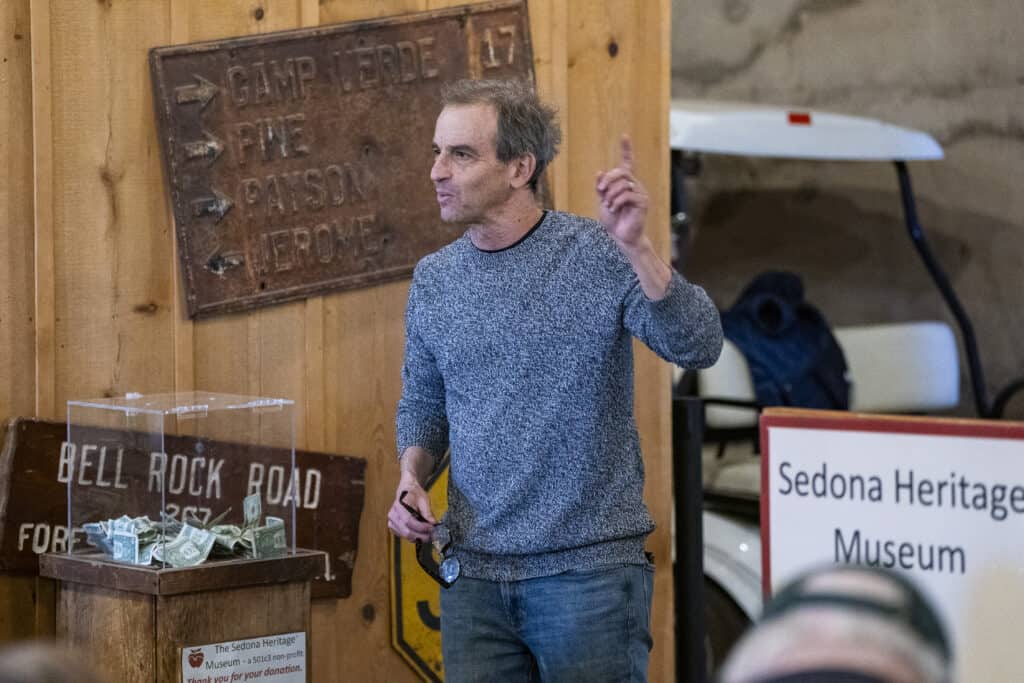
By October 1900, horsepower gave way to the internal combustion engine and stagecoach service ended.
“The area was actually managed by the Forest Service, right up until the park was established in 1919, and at that time the Forest Service realized that was a bigger job than they thought, managing all the tourism and shanty shacks being put up on the rim,” Weintraub said. “People started, of course, visiting the canyon either by train or by car at that point. While the automobile was becoming more popular, the train was probably the best way to get up there, and so basically just sort of started seeing that increase in tourism throughout the next 20 years.”
Weintraub said he is attracted to the history of the stagecoach line in part by how it has come full circle. In 1897, Flagstaff cycling clubs would do annual rides following the route, and 125 years later, that same activity takes place each September with the annual Flagstaff to Grand Canyon Stagecoach Line race that includes a 100-mile run, a 55K and a 100-mile mountain bike race in which cyclists race to complete the route faster then the historic stagecoach.
Weintraub will also be co-leading a two-day guided hike as a fundraiser for the Willow Bend Environmental Education Center on Saturday and Sunday, May 18 and 19.
“Ten participants and two camels retrace the 1857-59 footsteps of Lt. Edward Beale, his crews and camels who built the first federally- constructed wagon road in the United States in 1857,” the Willow Bend Environmental Education Center’s website states. “This marks the second annual trip, a unique living history program interpreting the history of the Beale Wagon Road across the Williams Ranger District and connecting ongoing forest restoration projects to the human history of the forest. Accommodations are reserved at Spring Valley Cabin for participants choosing to stay in either the bunkhouse or main cabin.”
For those interested in learning more about the history of the stagecoach line, Weintraub recommended the book “Grand Canyon — Flagstaff Stage Coach Line” by Richard and Sherry Mangum, which is available at Riordan Mansion State Historic Park in Flagstaff.
For more information about Weintraub’s guided trip, visit willowbendcenter.org.


